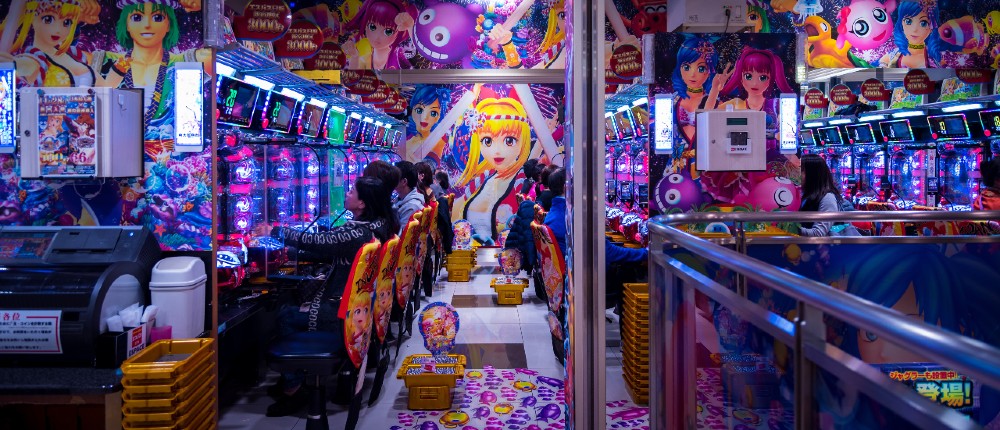Pachinko: The History Of Japan's Slot Machine
February 15 2022
Japan has always stood out from the rest of the world, particularly in terms of its technology. As a result, many tourists find Japan to be futuristic when visiting. Gambling also differs in Japan from the West, starting with pachinko, a mechanical game similar to slot machines.

Though a relatively simple game, Japanese pachinko players spend around $200 billion every year.
What's the Difference Between Pachinko and Slots?
There are several differences between pachinko and slots in Western gambling, such as game structure and online availability. For instance, slot games are more online-friendly than pachinko, as they do not have a physical component. Overall, slots have transitioned better in the online landscape, and today online gamblers can decide on everything from how much they want to stake per spin to theme choice, from Ancient Egypt to under the sea. These options mean that, when playing online, slot players have more opportunities to customize their gaming experience. There could also be a cultural difference between the two games. While Western gambling focuses on promotions, in pachinko, there are more skill-based components than incentive-based components.
In terms of game structure, pachinko has multiple levels. Players go through these stages before reaching the slot portion of the game. In fact, one level resembles pinball, as players load balls into the machine and then press a spring-loaded handle, releasing a ball that they have to guide in the metal track. In many ways, pachinko is a hybrid genre game, combining slots and pinball, which, according to https://www.thinkwithgoogle.com/, is something we're seeing more often in gaming. For example, Slingo has become more popular in the casino industry. This game combines elements of bingo with slots.
The History of Pachinko
So, if pachinko is different from the other forms of gambling in the world, where did it come from? Research suggests that even though pachinko machines first emerged during the 1920s, it didn't become mainstream until after 1948, when the first commercial pachinko parlor opened in Nagoya. The game is said to have taken inspiration from a 1920s product called the 'Corinth game' and Japanese billiards, which also emerged in Nagoya during the 1930s. Gamblers in Japan spend around $200 billion on pachinko every year.
Pachinko is so popular in Japan that it has also attracted international interest over the years. In 2001, British company BS Group acquired a stake in Tokyo Plaza, which was operating around 20 pachinko parlors. Likewise, the game is growing in the United States, and there is even a dedicated pachinko parlor called Pachinko World in Wilmington, North Carolina.
What do you think of our new VIP carpet here at #PachinkoWorld? pic.twitter.com/ttqMrPGZYk
— Pachinko World💎 (@PachinkoWorld) November 7, 2017
Gambling may be a universal activity, but that doesn't mean every country operates in the same ways. While slot machines in Western gambling have benefited the most from the industry's transition to the online world, Japanese casino games like pachinko still rely heavily on land-based machines. They also differ in the number of levels and the skills required to play.
This thriving industry has a lot of potential due to its popularity, cultural relevance, and simplicity of play. It remains to be seen the ways in which it will progress but it could be a distinct possibility that pachinko may follow the example taken with the Western style of slot games and move online. This would increase user interactivity and accessibility as well as improve the amount of choice there is. However, considering the current success of the game it could be a matter of leaving things as they are. If it isn't broken, don't fix it, right?
Related content
